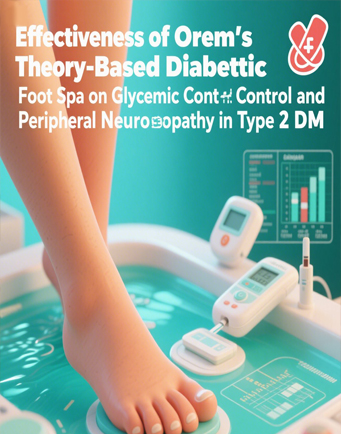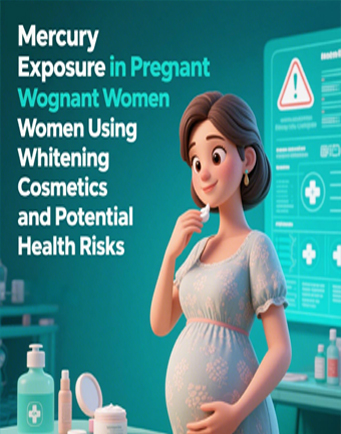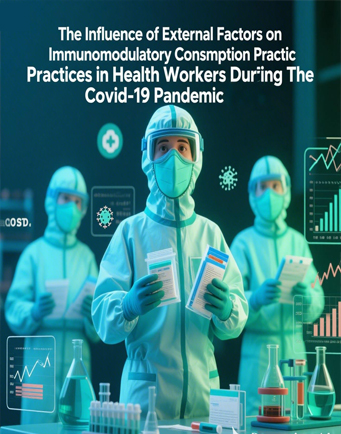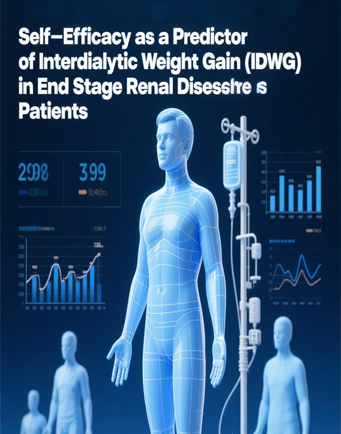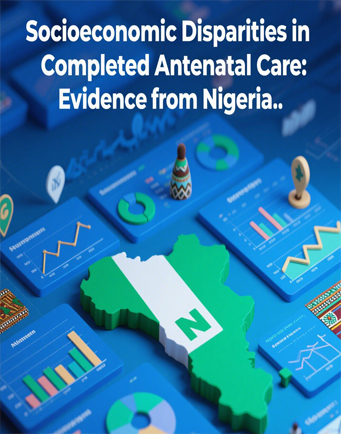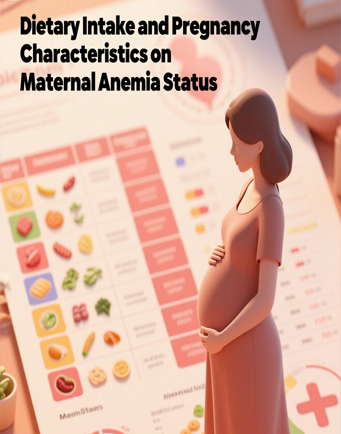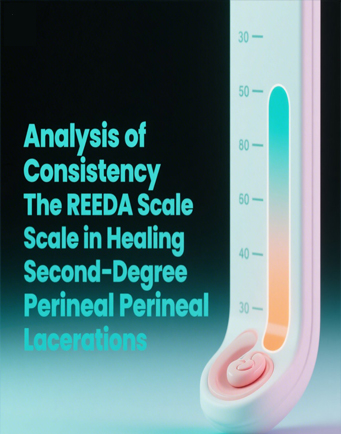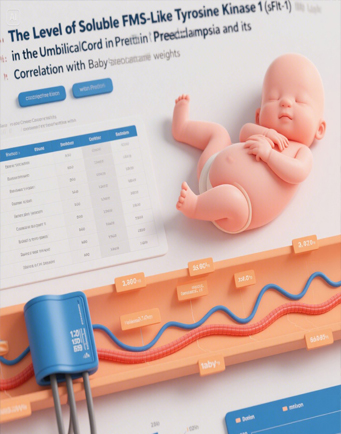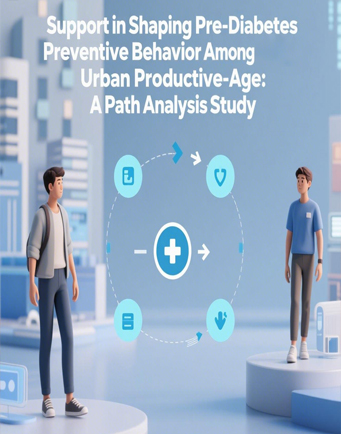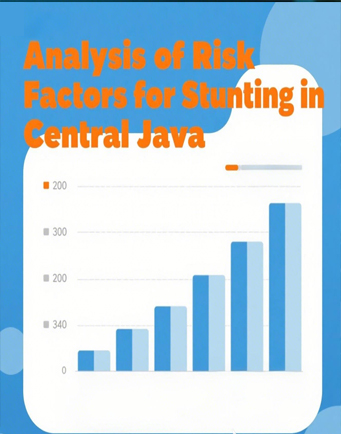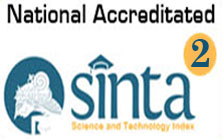Machine Learning-based Prediction Model for Adverse Pregnancy Outcomes: A Systematic Literature Review
Downloads
Most of Adverse Pregnancy Outcomes (APO) are preventable particularly if the health personnel can early detect the risk. This study aimed to review articles on how the machine learning model can predict APO for early detection to prevent neonatal mortality. We conducted a systematic literature review by analyzing seven articles which published between 1 January 2013 and 31 October 2022. The search strategy was the populations are pregnant women, intervention using machine learning for APO prediction, and the outcomes of APO are Low Birth Weight, preterm birth, and stillbirth. We found that the predictors of LBW were demographic, maternal, environmental, fetus characteristics, and obstetric factors. The predictors of preterm birth were demographics and lifestyle. Meanwhile, the predictors of stillbirth were demographic, lifestyle, maternal, obstetric, and fetus characteristics. It was indicated that Random Forest (Accuracy: 91.60; AUC-ROC: 96.80), Extreme Gradient Boosting (Accuracy: 90.80; AUC-ROC: 95.90), logistic regression (accuracy 90.24% and precision 87.6%) can be used to predict the risk of APO. By using a machine learning algorithm, the best APO prediction models that can be used are logistic regression, random forest, and extreme gradient boosting with sensitivity values and AUC of almost 100%. Demographic factors are the main risk factors for APO.
Arayeshgari, M., Najafi-Ghobadi, S., Tarhsaz, H., Parami, S., & Tapak, L. (2023). Machine Learning-based Classifiers for the Prediction of Low Birth Weight. Healthcare Informatics Research, 29(1), 54–63. https://doi.org/10.4258/hir.2023.29.1.54
Ashikul Islam Pollob, S. M., Abedin, M. M., Islam, M. T., Islam, M. M., & Maniruzzaman, M. (2022). Predicting risks of low birth weight in Bangladesh with machine learning. PLoS ONE, 17(5 May), 1–13. https://doi.org/10.1371/journal.pone.0267190
Bai, X., Zhou, Z., Luo, Y., Yang, H., Zhu, H., Chen, S., & Pan, H. (2022). Development and Evaluation of a Machine Learning Prediction Model for Small-for-Gestational-Age Births in Women Exposed to Radiation before Pregnancy. Journal of Personalized Medicine, 12(4). https://doi.org/10.3390/jpm12040550
Bappenas (National Planning Board). (2024). Kehidupan Sehat dan Sejahtera. https://sdgs.bappenas.go.id/tujuan-3/
Bekele, W. T. (2022a). Algoritme pembelajaran mesin untuk memprediksi berat lahir rendah di Ethiopia. 1–17.
Bekele, W. T. (2022b). Machine learning algorithms for predicting low birth weight in Ethiopia. BMC Medical Informatics and Decision Making, 22(1). https://doi.org/10.1186/s12911-022-01981-9
Bekele, W. T. (2022c). Machine learning algorithms for predicting low birth weight in Ethiopia. BMC Medical Informatics and Decision Making, 9, 1–17. https://doi.org/10.1186/s12911-022-01981-9
Belaghi, R. A., Beyene, J., & McDonald, S. D. (2021a). Prediction of preterm birth in nulliparous women using logistic regression and machine learning. PLoS ONE, 16(6 June), 58–62. https://doi.org/10.1371/journal.pone.0252025
Belaghi, R. A., Beyene, J., & McDonald, S. D. (2021b). Prediction of preterm birth in nulliparous women using logistic regression and machine learning. PLoS ONE, 16(6 June). https://doi.org/10.1371/journal.pone.0252025
Belaghi, R. A., Beyene, J., & McDonald, S. D. (2021c). Prediction of preterm birth in nulliparous women using logistic regression and machine learning. PLoS ONE, 16(6 June), 58–62. https://doi.org/10.1371/journal.pone.0252025
Belaghi, R. A., Beyene, J., Mcdonald, S. D., Obstetri, D., Mcmaster, U., Mcmaster, U., Matematika, D., Mcmaster, U., Obstetri, D., Medicine, D. M., & Mcmaster, U. (2021). Machine Translated by Google Prediksi kelahiran prematur pada wanita nulipara menggunakan regresi logistik dan pembelajaran mesin. Ci, 58–62.
Chen, X., Zhang, Y., Tang, Y., Sun, X., Tong, J., & Yan, D. (2023). Preterm birth and its associated factors in coastal areas of eastern China: a multicenter retrospective study. Journal of Public Health (Germany), 669. https://doi.org/10.1007/s10389-023-02042-9
Edwards, K. J., Maslin, K., Andrade, J., Jones, R. B., & Shawe, J. (2021). MHealth as a primary mode of intervention for women at risk of, or diagnosed with, gestational diabetes: A scoping review protocol. JBI Evidence Synthesis, 19(3), 660–668. https://doi.org/10.11124/JBIES-20-00151
Endalamaw, A., Engeda, E. H., Ekubagewargies, D. T., Belay, G. M., Tefera, M. A., & Endalamaw A, Engeda EH, Ekubagewargies DT, Belay GM, T. MA. (2018). Low birth weight and its associated factors in Ethiopia. Ital J Pediatr, 44(1), 1–12.
Gao, C., Osmundson, S., Velez Edwards, D. R., Jackson, G. P., Malin, B. A., & Chen, Y. (2019). Deep learning predicts extreme preterm birth from electronic health records. Journal of Biomedical Informatics, 100(September), 103334. https://doi.org/10.1016/j.jbi.2019.103334
Indonesia Ministry of Health (Kemenkes RI). (2022). Indonesia Health Profile 2021. In Indonesia Ministry of Health.
Kassaw, M. W., Abebe, A. M., Kassie, A. M., Abate, B. B., & Masresha, S. A. (2021). Trends of proximate low birth weight and associations among children under-five years of age: Evidence from the 2016 Ethiopian demographic and health survey data. PLoS ONE, 16(2 February), 1–15. https://doi.org/10.1371/journal.pone.0246587
Khan, W., Zaki, N., Masud, M. M., Ahmad, A., Ali, L., Ali, N., & Ahmed, L. A. (2022). Infant birth weight estimation and low birth weight classification in United Arab Emirates using machine learning algorithms. Scientific Reports, 12(1), 1–13. https://doi.org/10.1038/s41598-022-14393-6
Khan, W., Zaki, N., Masud, M. M., Ahmad, A., Ali, N., & Ahmed, L. A. (2022). Infant birth weight estimation and low birth weight classification in United Arab Emirates using machine learning algorithms. Scientific Reports, 1–13. https://doi.org/10.1038/s41598-022-14393-6
Khatibi, T., Hanifi, E., Sepehri, M. M., & Allahqoli, L. (2021). Proposing a machine-learning based method to predict stillbirth before and during delivery and ranking the features: nationwide retrospective cross-sectional study. BMC Pregnancy and Childbirth, 21(1), 1–17. https://doi.org/10.1186/s12884-021-03658-z
Koivu, A., & Sairanen, M. (2020). Predicting risk of stillbirth and preterm pregnancies with machine learning. Health Information Science and Systems, 8(1). https://doi.org/10.1007/s13755-020-00105-9
Mangold, C., Zoretic, S., Thallapureddy, K., Moreira, A., Chorath, K., & Moreira, A. (2021). Machine learning models for predicting neonatal mortality: A systematic review. Neonatology, 118(4), 394–405. https://doi.org/10.1159/000516891
Mombo-Ngoma, G., Mackanga, J. R., González, R., Ouedraogo, S., Kakolwa, M. A., Manego, R. Z., Basra, A., Rupérez, M., Cot, M., Kabanywany, A. M., Matsiegui, P. B., Agnandji, S. T., Vala, A., Massougbodji, A., Abdulla, S., Adegnika, A. A., Sevene, E., Macete, E., Yazdanbakhsh, M., … Ramharter, M. (2016). Young adolescent girls are at high risk for adverse pregnancy outcomes in sub-Saharan Africa: An observational multicountry study. BMJ Open, 6(6). https://doi.org/10.1136/bmjopen-2016-011783
National Population and Family Planning Board (BKKBN); Stastistics Central Bureau (BPS); Ministry of Health; USAID. (2017). Indonesia Demography Health Survey 2017. In IDHS.
Pollob, S. M. A. I., Abedin, M., & Id, T. I. (2022). Predicting risks of low birth weight in Bangladesh with machine learning. 1–13. https://doi.org/10.1371/journal.pone.0267190
Puspitasari, D., Ramanda, K., Supriyatna, A., Wahyudi, M., Sikumbang, E. D., & Sukmana, S. H. (2020). Comparison of Data Mining Algorithms Using Artificial Neural Networks (ANN) and Naive Bayes for Preterm Birth Prediction. Journal of Physics: Conference Series, 1641(1). https://doi.org/10.1088/1742-6596/1641/1/012068
Sun, Q., Zou, X., Yan, Y., Zhang, H., Wang, S., Gao, Y., Liu, H., Liu, S., Lu, J., Yang, Y., & Ma, X. (2022). Machine Learning-Based Prediction Model of Preterm Birth Using Electronic Health Record. Journal of Healthcare Engineering, 2022. https://doi.org/10.1155/2022/9635526
Tadese, M., Dagne, K., Wubetu, A. D., Abeway, S., Bekele, A., Kebede, W. M., & Mulu, G. B. (2022). Assessment of the adverse pregnancy outcomes and its associated factors among deliveries at Debre Berhan Comprehensive Specialized Hospital, Northeast Ethiopia. PLoS ONE, 17(7 July), 1–12. https://doi.org/10.1371/journal.pone.0271287
Wang, H., Naghavi, M., Allen, C., Barber, R. M., Carter, A., Casey, D. C., Charlson, F. J., Chen, A. Z., Coates, M. M., Coggeshall, M., Dandona, L., Dicker, D. J., Erskine, H. E., Haagsma, J. A., Fitzmaurice, C., Foreman, K., Forouzanfar, M. H., Fraser, M. S., Fullman, N., … Zuhlke, L. J. (2016). Global, regional, and national life expectancy, all-cause mortality, and cause-specific mortality for 249 causes of death, 1980–2015: a systematic analysis for the Global Burden of Disease Study 2015. The Lancet, 388(10053), 1459–1544. https://doi.org/10.1016/S0140-6736(16)31012-1
WHO. (2022). Newborn Moratlity. https://www.who.int/news-room/fact-sheets/detail/levels-and-trends-in-child-mortality-report-2021
Younger, A., Alkon, A., Harknett, K., Jean Louis, R., & Thompson, L. M. (2022). Adverse birth outcomes associated with household air pollution from unclean cooking fuels in low- and middle-income countries: A systematic review. Environmental Research, 204(PC), 112274. https://doi.org/10.1016/j.envres.2021.112274
Zhang, B., Dai, Y., Chen, H., & Yang, C. (2019). Neonatal Mortality in Hospitalized Chinese Population: A Meta-Analysis. BioMed Research International, 2019(June 2018), 1–7. https://doi.org/10.1155/2019/7919501
Zhang, Y., Lu, S., Wu, Y., Hu, W., & Yuan, Z. (2022). The Prediction of Preterm Birth Using Time-Series Technology-Based Machine Learning: Retrospective Cohort Study. JMIR Medical Informatics, 10(6). https://doi.org/10.2196/33835
Copyright (c) 2024 JURNAL INFO KESEHATAN

This work is licensed under a Creative Commons Attribution-NonCommercial-ShareAlike 4.0 International License.
Copyright notice
Ownership of copyright
The copyright in this website and the material on this website (including without limitation the text, computer code, artwork, photographs, images, music, audio material, video material and audio-visual material on this website) is owned by JURNAL INFO KESEHATAN and its licensors.
Copyright license
JURNAL INFO KESEHATAN grants to you a worldwide non-exclusive royalty-free revocable license to:
- view this website and the material on this website on a computer or mobile device via a web browser;
- copy and store this website and the material on this website in your web browser cache memory; and
- print pages from this website for your use.
- All articles published by JURNAL INFO KESEHATAN are licensed under the Creative Commons Attribution 4.0 International License. This permits anyone to copy, redistribute, remix, transmit and adapt the work provided the original work and source is appropriately cited.
JURNAL INFO KESEHATAN does not grant you any other rights in relation to this website or the material on this website. In other words, all other rights are reserved.
For the avoidance of doubt, you must not adapt, edit, change, transform, publish, republish, distribute, redistribute, broadcast, rebroadcast or show or play in public this website or the material on this website (in any form or media) without appropriately and conspicuously citing the original work and source or JURNAL INFO KESEHATAN prior written permission.
Permissions
You may request permission to use the copyright materials on this website by writing to jurnalinfokesehatan@gmail.com.
Enforcement of copyright
JURNAL INFO KESEHATAN takes the protection of its copyright very seriously.
If JURNAL INFO KESEHATAN discovers that you have used its copyright materials in contravention of the license above, JURNAL INFO KESEHATAN may bring legal proceedings against you seeking monetary damages and an injunction to stop you using those materials. You could also be ordered to pay legal costs.
If you become aware of any use of JURNAL INFO KESEHATAN copyright materials that contravenes or may contravene the license above, please report this by email to jurnalinfokesehatan@gmail.com
Infringing material
If you become aware of any material on the website that you believe infringes your or any other person's copyright, please report this by email to jurnalinfokesehatan@gmail.com.




